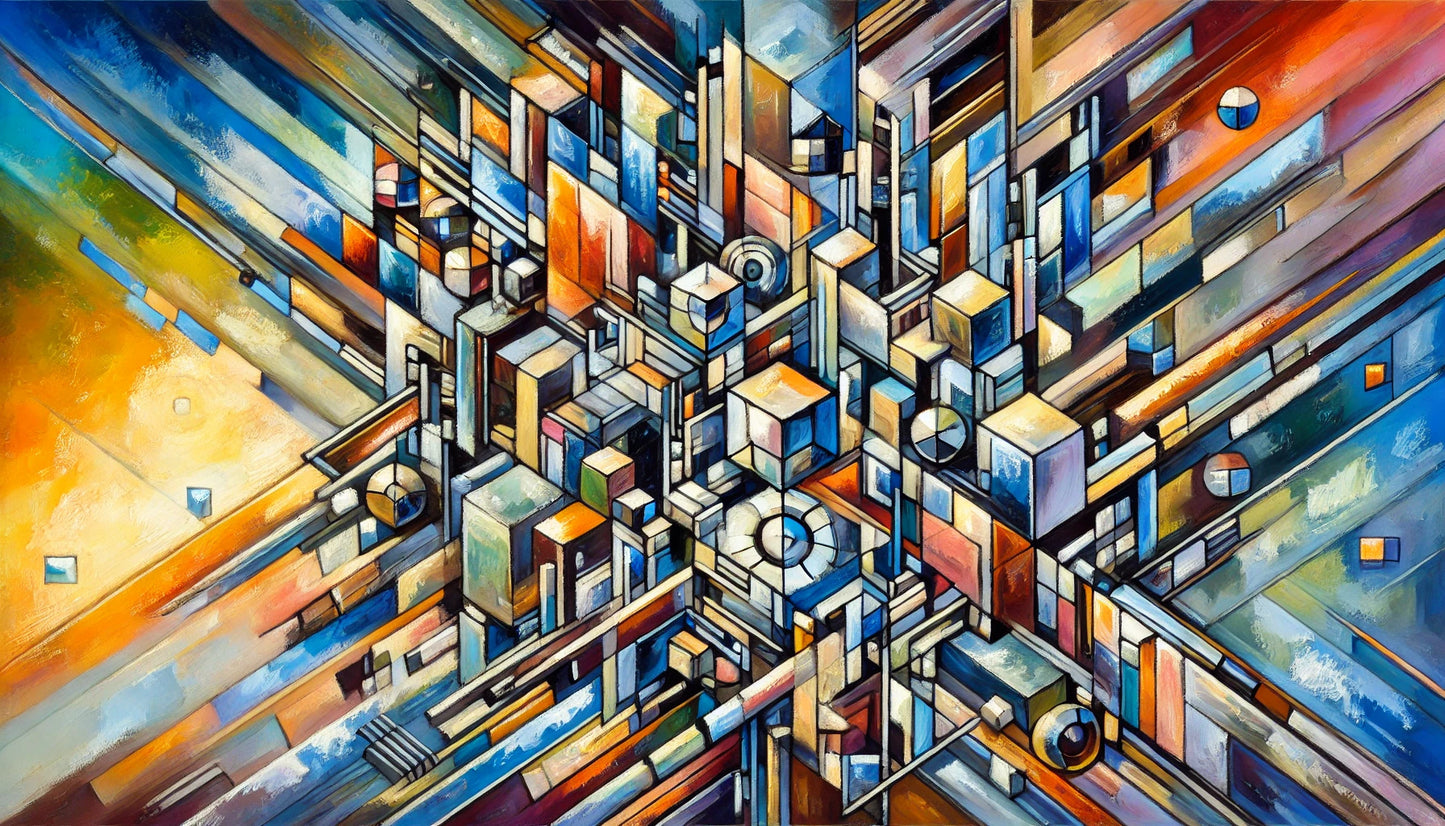Multidimensional Future – Fragments of Tomorrow
Multidimensional Future – Fragments of Tomorrow
Kubizm
Fantastyka i science fiction
Lead time
Lead time
⏳ Delivery time
The order processing time depends on: the production technique, the drying time of the paints, the size of the image and any hand-finishing and protection.
🖼️ Art print on canvas
-
High quality canvas printing :
- Canvas - synthetic canvas 260 g
- Natural Canvas - 260 g cotton canvas
- Stretching the canvas onto the frame
- Quality control and packaging
Total completion time:
🎨 Oil Giclée Reproduction (print + hand-finished)
-
Giclée print on canvas:
- Canvas premium - natural cotton canvas 360 g
- Pigment print drying
- Hand finishing: texturing and oil painting
- Paint drying (depending on layer thickness, medium type and format)
- Stretching the canvas onto the frame
- Quality control and packaging
Total completion time: –
🚚 Ready-made paintings – shipped within 24 hours
Our gallery has a special category called "Ready-Made Paintings" - these are works available immediately, already stretched on a frame or in a ready-made frame.
- They are 100% ready for immediate shipment
- Safe packaging in a reinforced cardboard box
Shipping takes place within: from the date of booking the order.
Image format: Reprodukcja Oil Giclée
Need a different size? Contact us.
Couldn't load pickup availability
"Multidimensional Future – Fragments of Tomorrow"
2. Description of the image
"Multidimensional Future – Fragments of Tomorrow" is a complex, tense composition in which the future unfolds into shapes, colors, and layers. This is a painting that doesn't show—it analyzes. The world of the future is not depicted linearly, but as a deconstruction: cities shattered into geometric forms, technologies transformed into rhythmic systems, consciousness scattered across the canvas like fragments of code. This is an intellectual painting, but not a cold one—it pulsates with color, sparks with tension, and delights with form. Every element here has meaning, every detail leads to another dimension.
3. Technology
Oil on canvas, using delicate, thin brushstrokes and a dry brush technique to precisely model edges and details. Bold impasto strokes create depth and texture, giving the composition a physical presence. The image is both visually and tactilely perceptible.
4. Style
Future Cubism – filtered through a science fiction imagination. The style combines geometric analyticality with cosmic imagination. It's as if Picasso met artificial intelligence and together they created a vision of the world after the technological revolution.
5. Colors
Diverse and high-contrast. Intense oranges, neon blues, chrome greens, and cobalt shadows collide with fragments of white and deep navy. Each color creates a distinct frequency—together, they create a symphony of the future.
6. Invoice
Rich, layered, and expressive. Thick impasto sections break up the plane, creating multidimensionality not only in perspective but also in touch. The painting seems to move, as if each part were a separate system operating within a single body.
7. Inspiration
Echoes of Picasso and Braque's Cubism, but translated into the language of machines, interfaces, and futuristic architecture. Inspirations also come from the aesthetics of constructivism, as well as the visions of cyberworlds created by Stanisław Lem and the cinematic worlds of Christopher Nolan.
8. Message and multidimensionality of interpretation
The painting asks what the future will become when analyzed—dissected into data, processed, reconstructed. Will anything human remain? Will fragmentation lead to understanding or loss? It's a vision of the future as a puzzle—beautiful, complex, and full of mystery. An image that offers no single answer—it offers infinite interpretations.
9. Originality and authenticity
An exceptionally rare combination of classic painting techniques and ultramodern visual narrative. Authentic because it is deeply considered and genuinely emotional – despite its intellectual form. Original because it transcends genres and styles, creating a new aesthetic: the Cubist code of tomorrow.
✨ The future doesn't come whole. It falls apart into fragments before it assembles into something we can understand. ✨
Share


